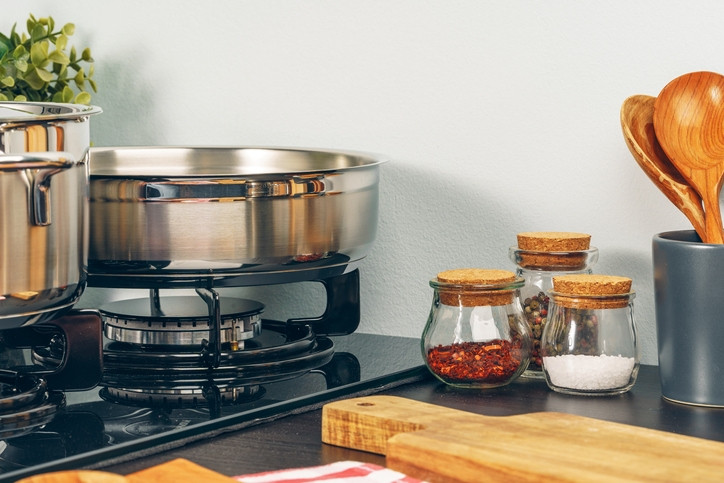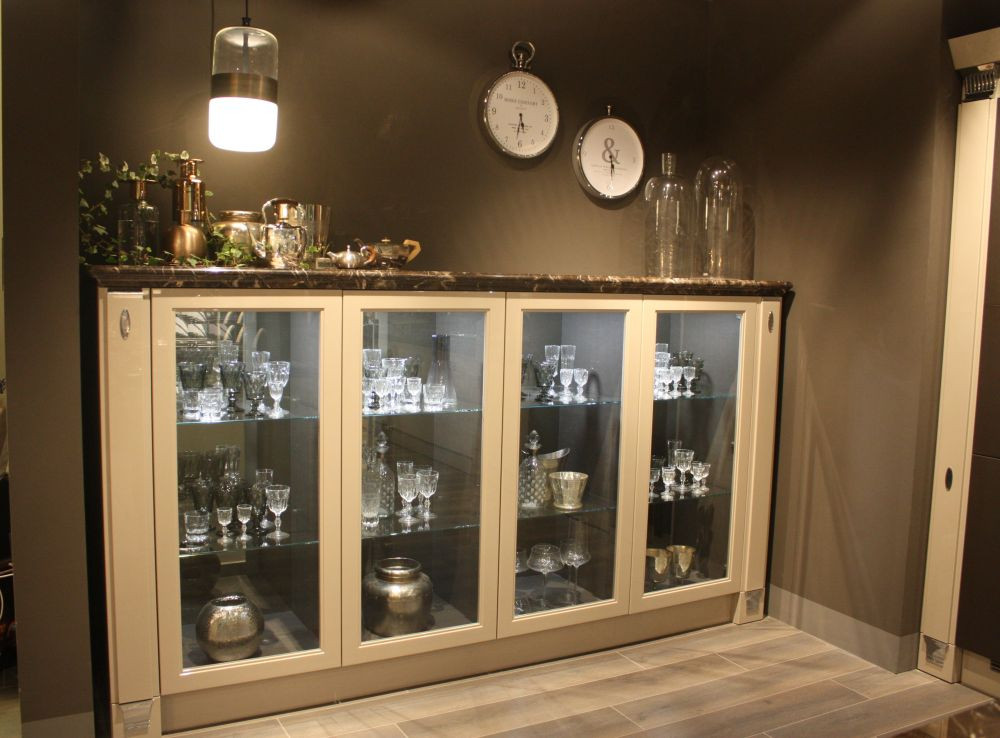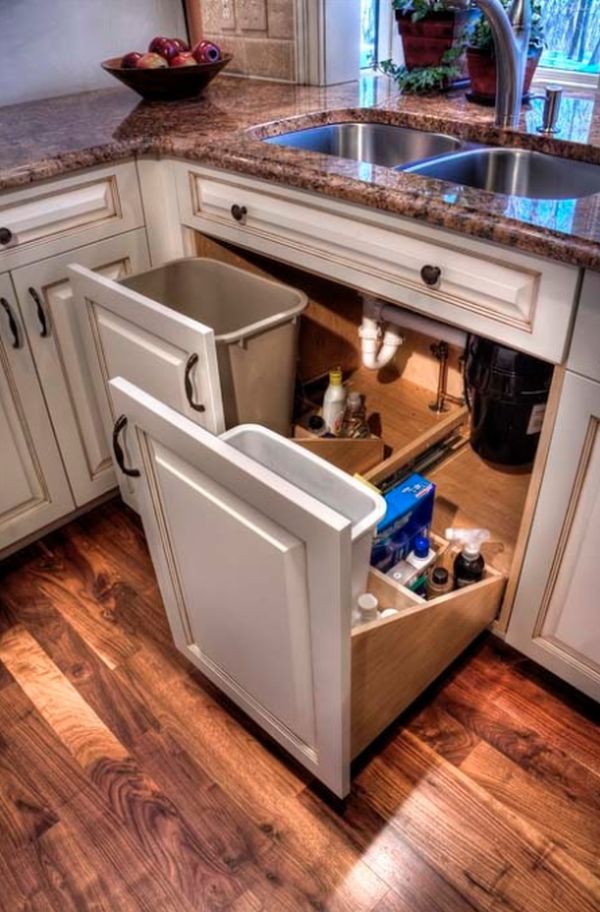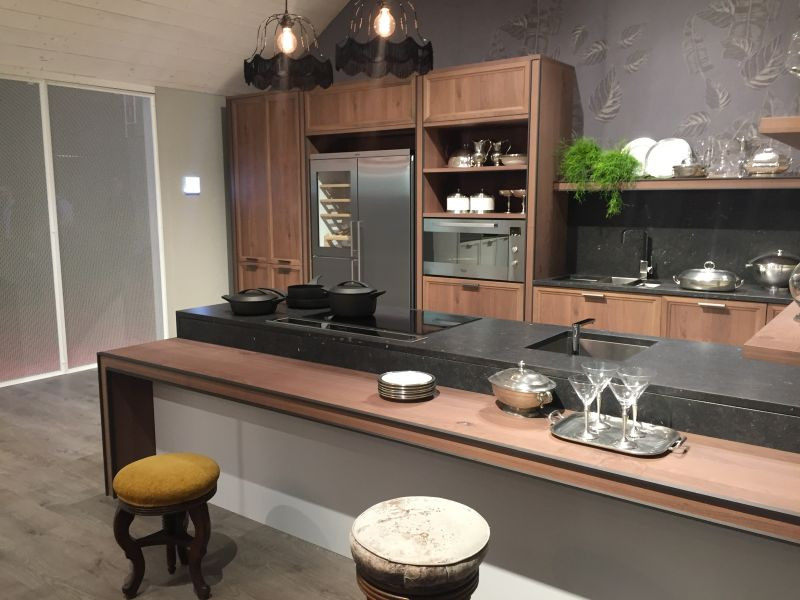
Even when it comes to furniture or other home-related products, a one-size-fits-all approach rarely works. A nice example is countertops. A kitchen counter’s normal height is 36” off the ground.

While this may be acceptable to some, in many cases the counter is either too low or too high. After all, we’re all unique, so why settle for something that doesn’t work for us? Because industry standard heights don’t suit everyone, the logical solution is a bespoke countertop height that is tailored to the person or people who will be using it.
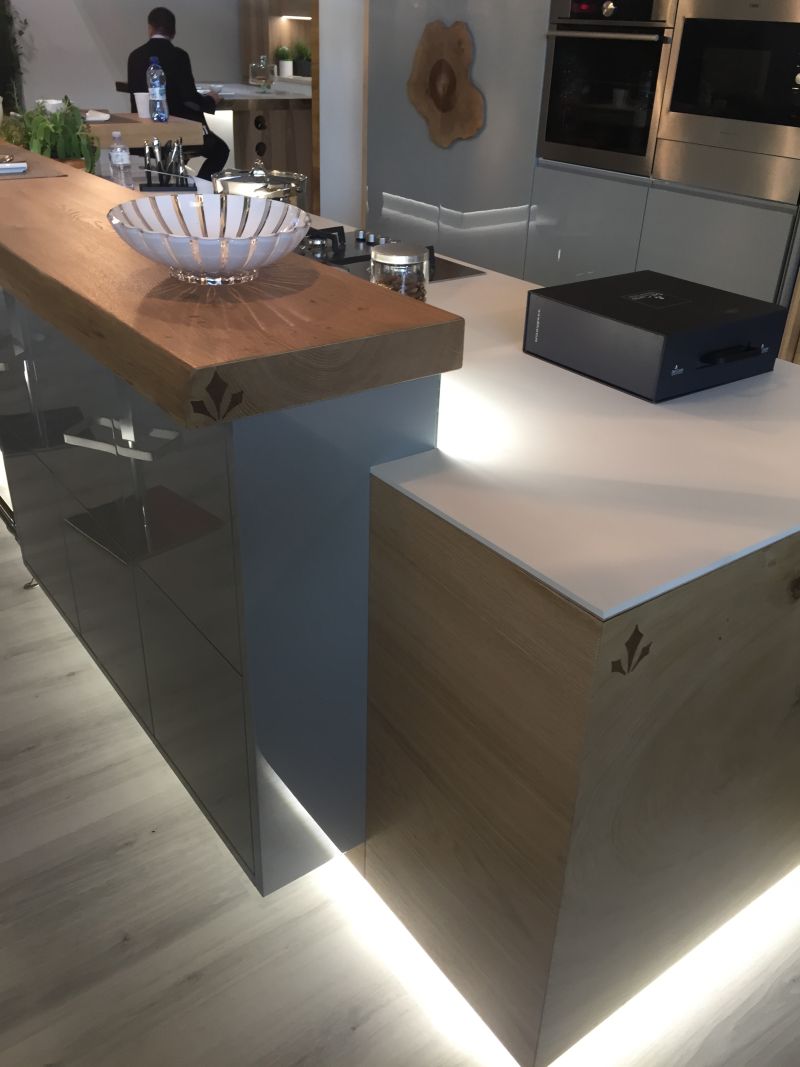 Take measurements and always explore bespoke alternatives if you want to build your kitchen from the ground up.
Take measurements and always explore bespoke alternatives if you want to build your kitchen from the ground up.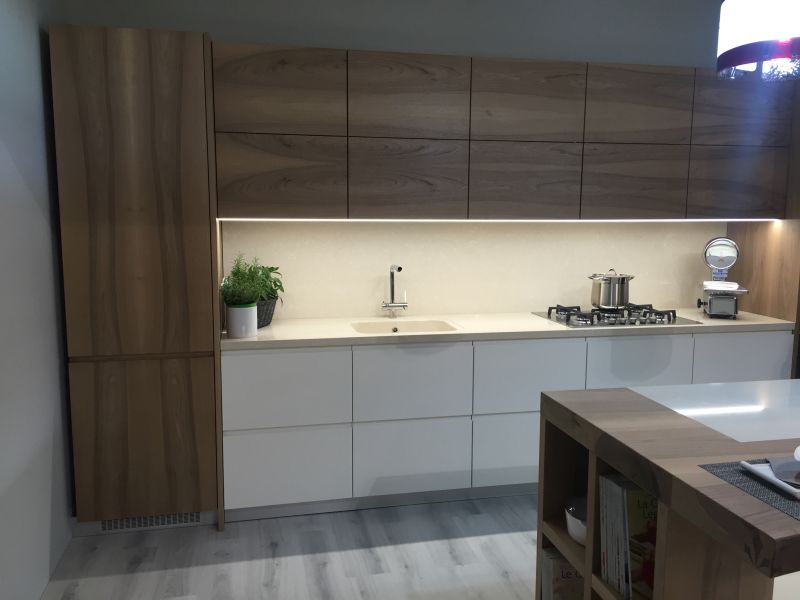 The regular counter depth is 24” and the gap between the counter and upper cabinets is typically 15” to 20”
The regular counter depth is 24” and the gap between the counter and upper cabinets is typically 15” to 20” If you have an island or a U-shaped kitchen, make sure there is at least 48” of circulation space between them.
If you have an island or a U-shaped kitchen, make sure there is at least 48” of circulation space between them.But what if there are numerous people in the kitchen, each with a different height? There’s a workable solution for it as well. For families or shared kitchens, multi-height counters are a terrific option. They essentially consist of a variety of surfaces with varying heights so that everyone may feel at ease when using the kitchen. Another benefit of this design is that it’s particularly well-suited to multi-functional kitchen islands that can also serve as bars or dining tables.
 You must also leave at least 12” of counter space on the side of the stove or refrigerator.
You must also leave at least 12” of counter space on the side of the stove or refrigerator. For added comfort, kitchen islands with table extensions frequently decrease the table height.
For added comfort, kitchen islands with table extensions frequently decrease the table height.Although a bar-height table looks great with bar stools, it’s not the most comfortable option for a breakfast nook or table. A lower-height counter lowers the eating area to a more comfortable level, and it can be utilised in conjunction with standard dining chairs. Multi-height counters bring a new concept to the table as well. They give the user the ability to physically divide functions. As a result, the dining countertops may be distinguished from the prep areas, cooktops, and baking counters, and each can be created with the appropriate height for the function it serves.
 Prefabricated cabinets are built to a set height, so keep that in mind when designing your kitchen.
Prefabricated cabinets are built to a set height, so keep that in mind when designing your kitchen. Incorporating multi-height counters into the design of a bespoke kitchen island is possible.
Incorporating multi-height counters into the design of a bespoke kitchen island is possible.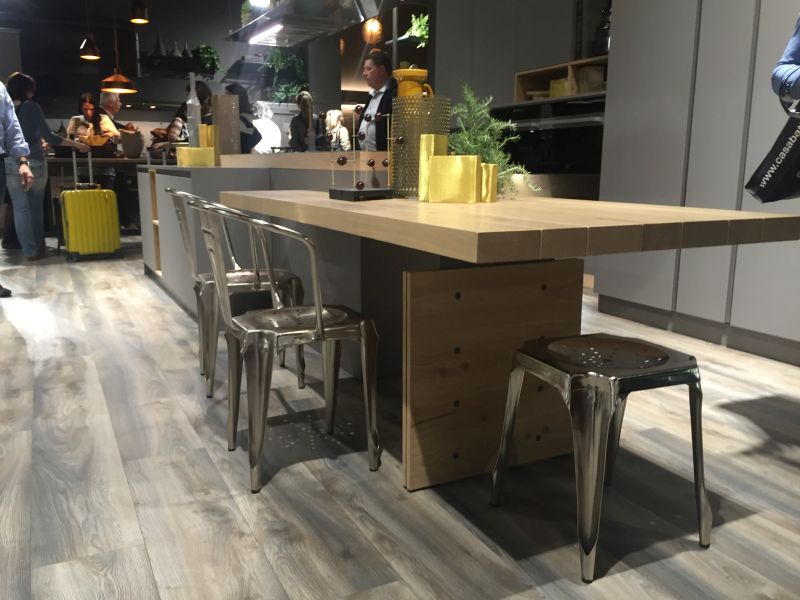 Choose the counter’s height based on the height of persons who will be using it the most or the purpose it will serve.
Choose the counter’s height based on the height of persons who will be using it the most or the purpose it will serve. That’s a brilliant approach to combine two different countertop heights without taking up a lot of room.
That’s a brilliant approach to combine two different countertop heights without taking up a lot of room.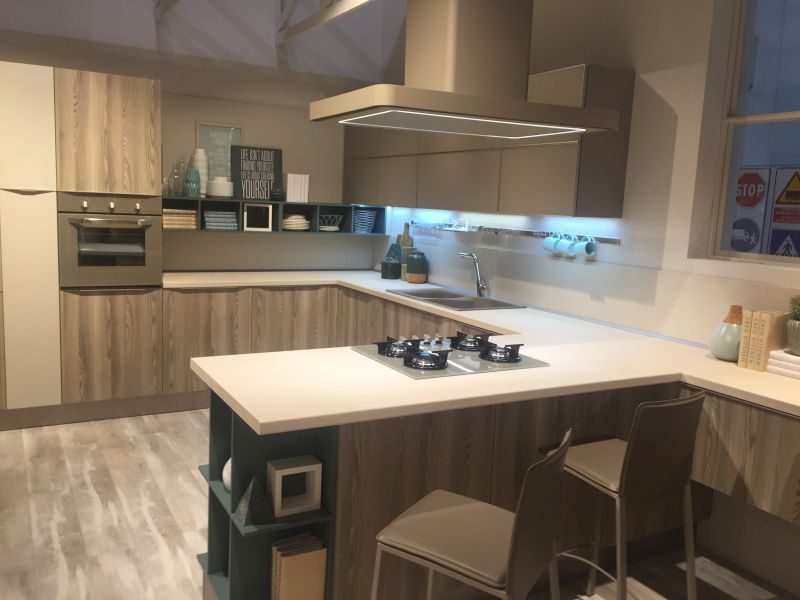 Although bespoke countertop heights are generally advantageous, they do have a few drawbacks.
Although bespoke countertop heights are generally advantageous, they do have a few drawbacks.Here’s how to determine the appropriate height for each area: To chop, slice, and dice effortlessly and comfortably, prep surfaces should be 3”-4” below the elbow. To avoid spraying hot oil in the face, the cooking surfaces should be 5”-6” below the elbow. Low-level surfaces, such as the area where you roll dough or knead bread, are another option. 8” below the elbow is the recommended length.
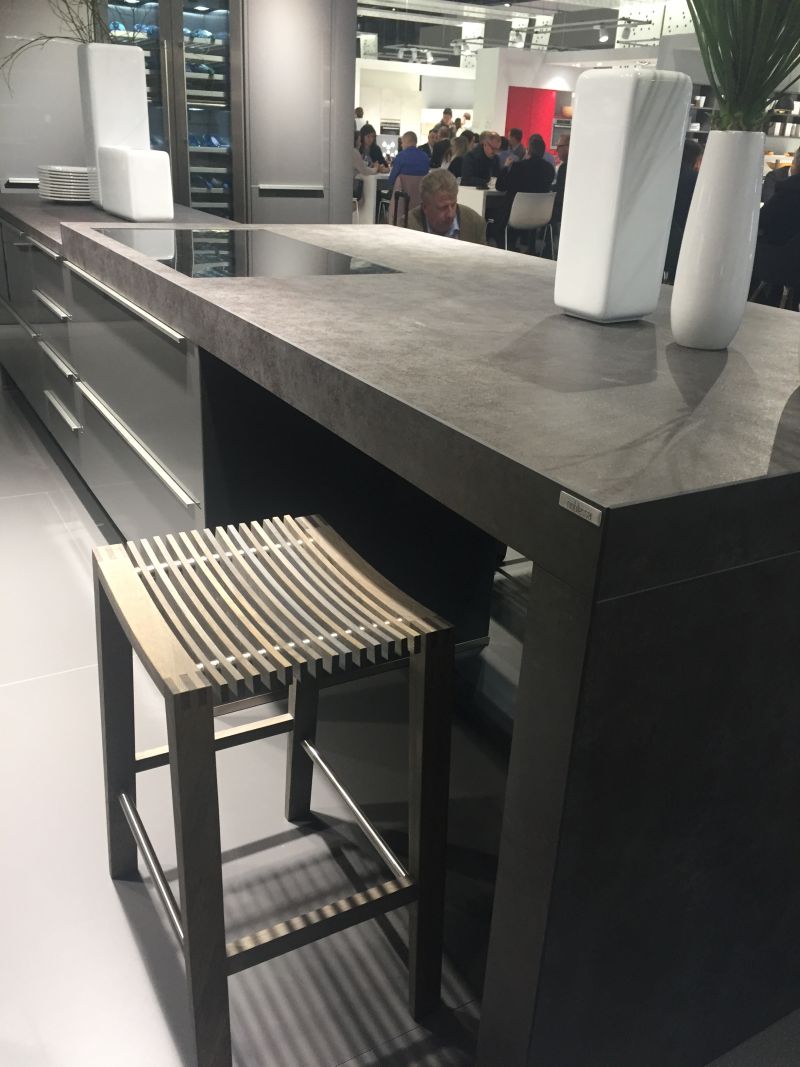 One downside is that a bespoke countertop height can cause issues when updating or purchasing appliances.
One downside is that a bespoke countertop height can cause issues when updating or purchasing appliances.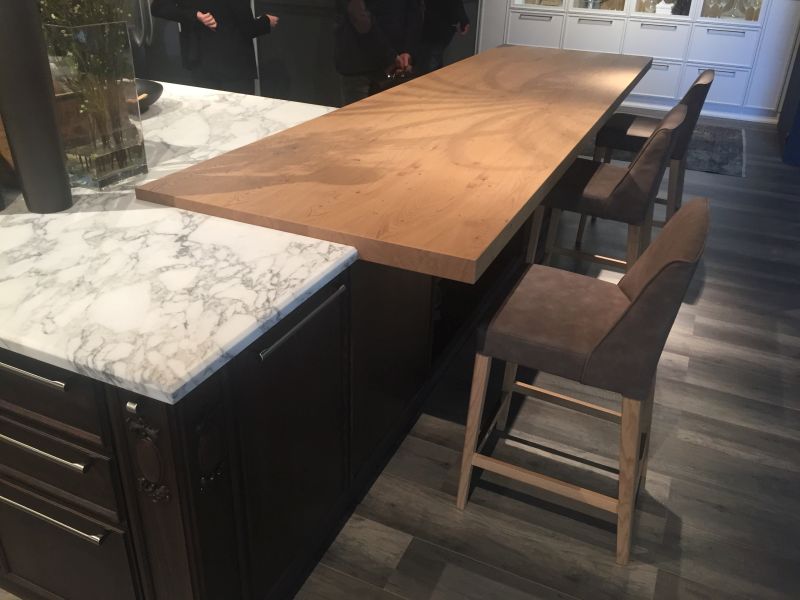 So, before choosing a counter with a custom height, think about all the aspects. It isn’t always the most sensible option.
So, before choosing a counter with a custom height, think about all the aspects. It isn’t always the most sensible option. When building a kitchen with white quartz countertops, incorporating a custom-height counter is usually simple. You can elevate the island if the counter is too low.
When building a kitchen with white quartz countertops, incorporating a custom-height counter is usually simple. You can elevate the island if the counter is too low. When creating a custom kitchen, keep the thickness of the counter in mind. Not all counters are created equal.
When creating a custom kitchen, keep the thickness of the counter in mind. Not all counters are created equal. You can separate the purposes of a multi-height counter by utilising different materials or colours.
You can separate the purposes of a multi-height counter by utilising different materials or colours.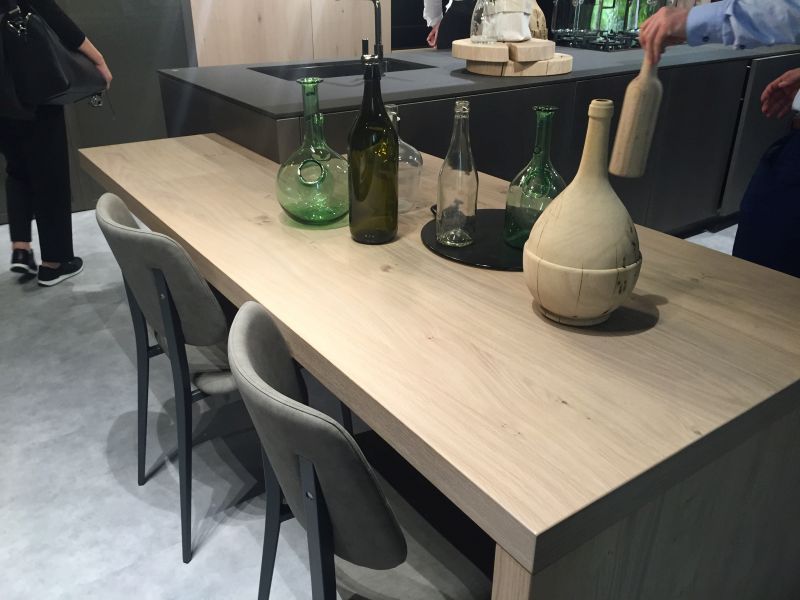 Multi-height counters can be implemented in a variety of ways.
Multi-height counters can be implemented in a variety of ways. L-shaped designs are a practical choice that also helps to define the room’s functions.
L-shaped designs are a practical choice that also helps to define the room’s functions. The distance between the counter and higher cabinets is frequently determined by the height of the counter.
The distance between the counter and higher cabinets is frequently determined by the height of the counter.As a result, the normal counter height is 36” off the ground. However, the height might range between 35 12” to 37”, so don’t take this amount at face value. It is determined by factors such as counter thickness and cabinet height. 32” is a lower-than-average countertop height. 38”-39” is one inch above normal. The height of a wheelchair countertop is 31”-34”, while the height of a typical kitchen island is 42”.
Which materials are the most popular for countertops?
When it comes to the material that your kitchen countertop is constructed of, you have a lot of alternatives to select from, and you’ve definitely heard about most of them. Each has its own distinct characteristics as well as advantages and disadvantages, and picking the best selection is always subjective. Going shopping, it’s helpful to have a solid knowledge of all the possibilities accessible, and we can assist you with that.
Granite
 For many individuals, granite was and still is the preferred countertop material. It was once more popular before other, more cost-effective solutions were found, and it is now more of a statement material.
For many individuals, granite was and still is the preferred countertop material. It was once more popular before other, more cost-effective solutions were found, and it is now more of a statement material.Granite countertops are extremely strong and durable, require very little care, are heat resistant, and come in a variety of colour variations. At the same time, they’re prohibitively expensive, difficult to install, and susceptible to cracking and staining if not properly sealed or stressed.
Marble
 View in gallery
View in galleryWhen it comes to countertops, marble is an iconic material that is frequently associated with elegance and luxury. Because no two slabs of marble are alike, each countertop is one-of-a-kind. There are many various types of marble, many of which are very expensive, but there are also affordable options, such as Carrara marble.
Marble countertops are water and heat resistant, as well as being quite attractive. They are, however, costly, necessitate skilled installation, discolour quickly, and are easily scratched.
Quartz

Quartz countertops aren’t produced from solid slabs of quartz. They’re composed of engineered stone, which is formed into slabs and contains a high percentage of quartz particles and other elements. They have a comparable aspect to marble surfaces in terms of cleanliness and spotless appearance.
Quartz countertops may be created to order in any size or form, are stain, heat, and acid resistant, and are simple to maintain and install. At the same time, they’re quite hefty and pricey.
Soapstone
 Soapstone, a dark grey substance with a smooth and silky texture, has recently become a trendy alternative to granite. It develops a patina as it ages, and it’s also a natural stone, giving it a distinct appearance.
Soapstone, a dark grey substance with a smooth and silky texture, has recently become a trendy alternative to granite. It develops a patina as it ages, and it’s also a natural stone, giving it a distinct appearance.Soapstone counters are stain and heat resistant, although not as much as granite or marble. They require skilled installation and mineral oil treatment, and they are easily scratched and dented.
Wood

Wood is one of the most flexible materials available, and it may be used not just for cabinetry and shelves in the kitchen, but also for countertops. It has a welcoming appearance and fits a wide range of styles.
Wood countertops are extremely resilient and can endure a long time. They do, however, necessitate regular maintenance and must be greased and sealed on a regular basis. They also scratch easily, are susceptible to water damage, and can become stained. Bacteria can also be a problem.
Stainless steel is a durable material

Stainless steel countertops offer a kitchen a very professional appearance. They’re also great for modern and industrial settings, and they have a lot of benefits. Stainless steel countertops, for example, are incredibly robust, resistant to heat and water damage, and have a natural resistance to bacteria. They can, however, be easily scratched, are frigid and noisy, and are also quite pricey.
Concrete

Concrete has been a popular choice for a variety of modern house interiors. It has an industrial feel to it and is really adaptable. Concrete countertops can be made to order and come in a variety of forms and sizes.
Concrete countertops are heat and scratch resistant, but they are porous and water can harm them. They discolour readily, need to be maintained on a regular basis, can crack over time, and are difficult to install.
Laminates
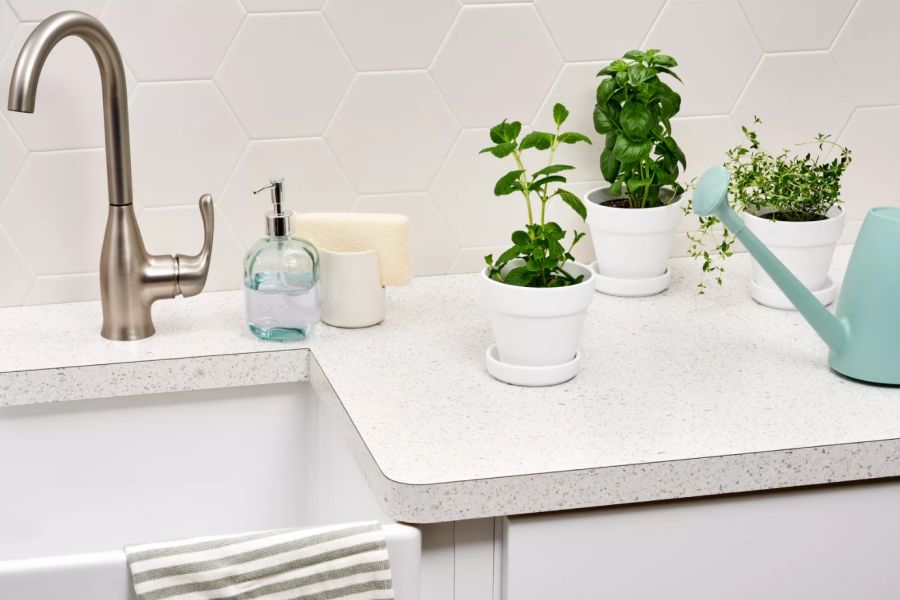
Laminate countertops are quite popular, which might make them appear a little too mainstream and conventional. A multitude of factors contribute to their popularity, including low maintenance requirements, a wide range of colours and finishes, low cost, and ease of installation.
They do, however, have significant drawbacks, including the fact that they are readily scratched, difficult if not impossible to repair, and always have obvious seams.
Granite vs. butcher block countertops

Some typical countertop kinds may appear to be very similar, but they all have distinct features and characteristics. The decision between a butcher block and a granite countertop is a countertop.
Let’s start by defining each one. A butcher block is constructed from various wood slices that are combined and bonded together to provide a robust and durable surface. They can be built out of a variety of woods, such as maple, walnut, red oak, or cherry.
There are a variety of wood grains to chose from as well. Closed-grain wood is quite smooth, but open-grain wood is porous and rough, making it less suitable for kitchen use.
The strongest and most lasting variety of all is end grain, which is made up of many small square blocks bonded together.
Because it’s both robust and inexpensive, edge grain is the most popular. It’s constructed up of long hardwood slabs.
Face grain is the least durable variety, as it is formed of long hardwood planks.
Granite is more difficult to rate because there is no standard method for determining its quality, and each shop must develop their own grading system. However, there are three basic grades of granite: commercial or builder grade granite, mid-grade granite, and high-quality granite.
With a few small exceptions, these categories are all pretty similar. High-quality granite is more difficult to come by, and it frequently has unique patterns and colours. However, in terms of physical quality, all three varieties are essentially the same, therefore the distinctions are primarily focused on appearance.
Butcher block and granite countertops both have advantages and disadvantages. Granite, for example, is long-lasting and low-maintenance, resistant to heat, scratches, and stains, and available in a variety of colours and patterns. At the same time, because granite is a natural stone, it can have flaws, and if it is damaged, it will almost always require the services of a professional, which can be quite costly.
Butcher block countertops, on the other hand, give the kitchen a warm and inviting vibe. They’re also kinder to your knives because they’re not as rough as stone, but this also means they’re more susceptible to damage. They are prone to scratches and stains, but this isn’t the end of the world because most can be repaired at home with sandpaper and oil.
Granite and butcher block counters have quite different care requirements. On the one hand, wood countertops take more upkeep and must be oiled on a regular basis to prevent moisture from penetrating the wood. This, on the other hand, is simple and does not necessitate professional aid.
Granite countertops, on the other hand, are low-maintenance and only need to be sealed once.
Granite vs. Marble Countertops

Countertops made of marble and granite are another popular comparison. Because granite is the most prevalent variety, and marble is similar to it in many aspects, it makes sense. Although they are both natural stone materials, marble is a metamorphic rock composed of limestone, whereas granite is an igneous rock composed of a variety of components or grains.
The look of these two materials is the most noticeable distinction. Granite’s composition gives it a gritty appearance. These specks can be a variety of colours depending on the granite’s composition, so there are many options to pick from.
Marble, on the other hand, is prized for its smooth surface and distinctive veins. Marble is quite homogeneous, and the colours are usually concentrated in these veins, giving each piece a distinct appearance.
If we were to compare the durability of these two materials, granite would win. It’s more durable and resistant to scratches and chipping. Of course, both materials are heat resistant, but they are not stain resistant due to their porous nature. They both necessitate regular maintenance and sealing.
Marble and granite countertops are, once again, pretty comparable in price. Granite has a lesser density than marble, but there are exceptions. Rare granite kinds can cost more than marble, and vice versa.
Granite vs. marble vs. quartz

Another material that we frequently consider for our kitchen countertops is quartz. It, too, looks a lot like granite and marble, which can cause confusion. So, how does it stack up against these two other options?
First and foremost, quartz countertops are not solid natural stone slabs, but rather manufactured surfaces. In comparison to marble and granite, this means there are more styles and types to pick from. Some quartz countertops have a speckled appearance comparable to granite, while others look like marble.
Quartz countertops include a resin that is prone to heat damage, so they should not be used in hot environments. Heat might cause the resin to melt and leave lasting traces on the counter. Marble and granite are superior in this regard.
Quartz is equivalent to both granite and marble in terms of price, but it is slightly more expensive than these two. The extra price comes with a few benefits, such as the fact that quartz is a non-porous material that is more stain resistant than the other two. It’s also long-lasting and available in a variety of styles and hues.



